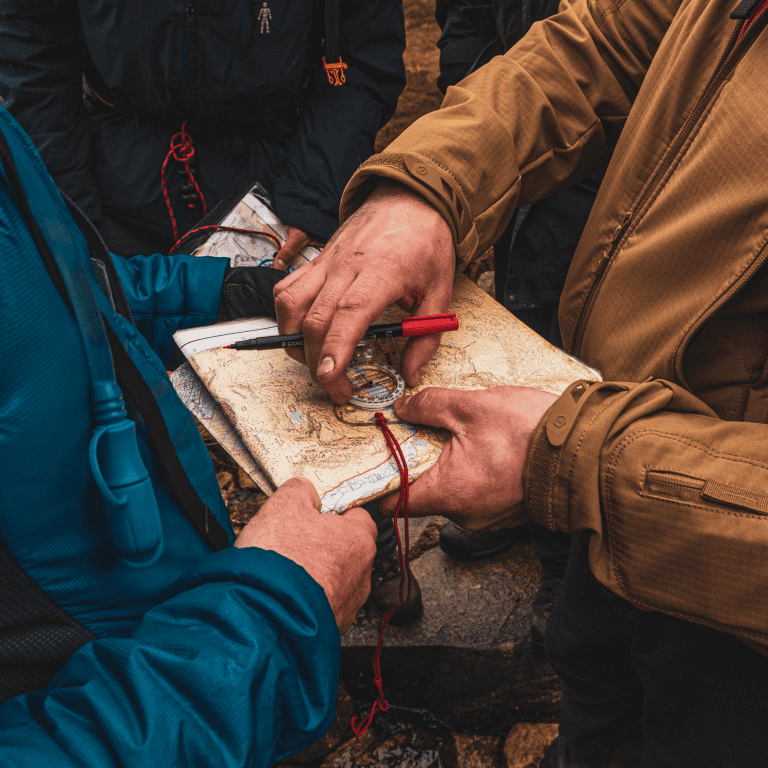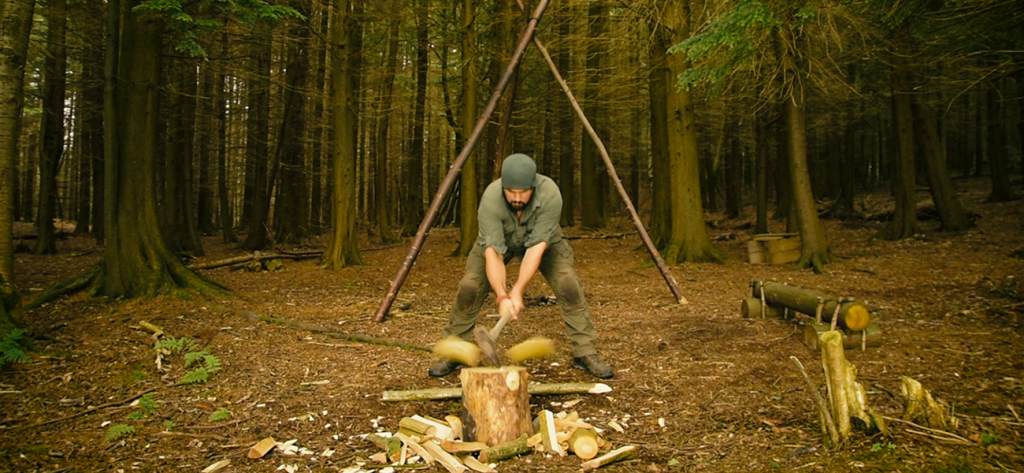
The Basics of Axe Safety
30th June 2019
Simple safety rules for all users of axes at camp, in the woods or at home
Axes are great. I use them every week, and have been swinging them around for at least 20 years. They are versatile tools, and as important as a crafting item as an outdoor safety/survival tool. I couldn’t do my job without one.
They’re also (potentially) bloody dangerous, and one misplaced swing with an axe could leave you with a bit more room in your gloves for the rest of your life, or with an extra hole in your leg (and a lot less blood in your body than you would like).
Anybody who has in the past attended one of our North Wales bushcraft courses knows that when the cutting tools come out for the first time we spend a bit of time refreshing those safety basics. For any of our ‘safety rules’ I try and create one simple message that is unchanged throughout the sessions, something that works for users of all experience levels.
In the video below I go through what that safety rule is, and discuss a few other techniques and considerations for using an axe safely, such as The Blood Circle and how changing your body position will greatly affect how ‘safe’ your cutting action is.
The Three Safe Places an axe can come to a stop
The key message for that video, and the baseline standard I try and use for anytime I pick up and use an axe, is that when you are swining an axe of any size, in any way, it can only come to a complete rest at the end of that swing in one of Three Safe Places:
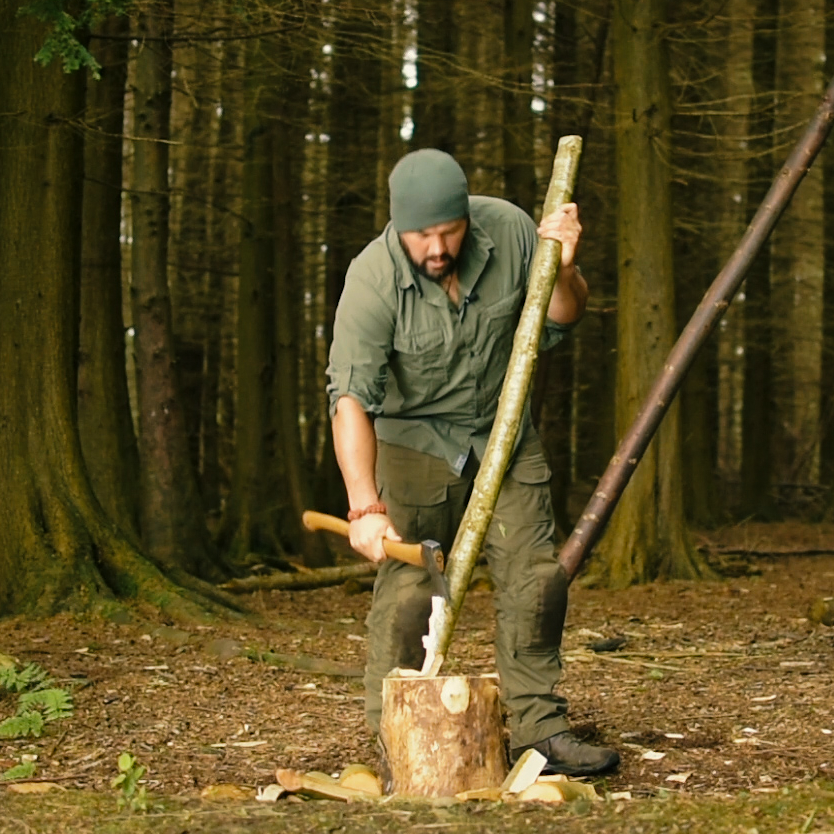
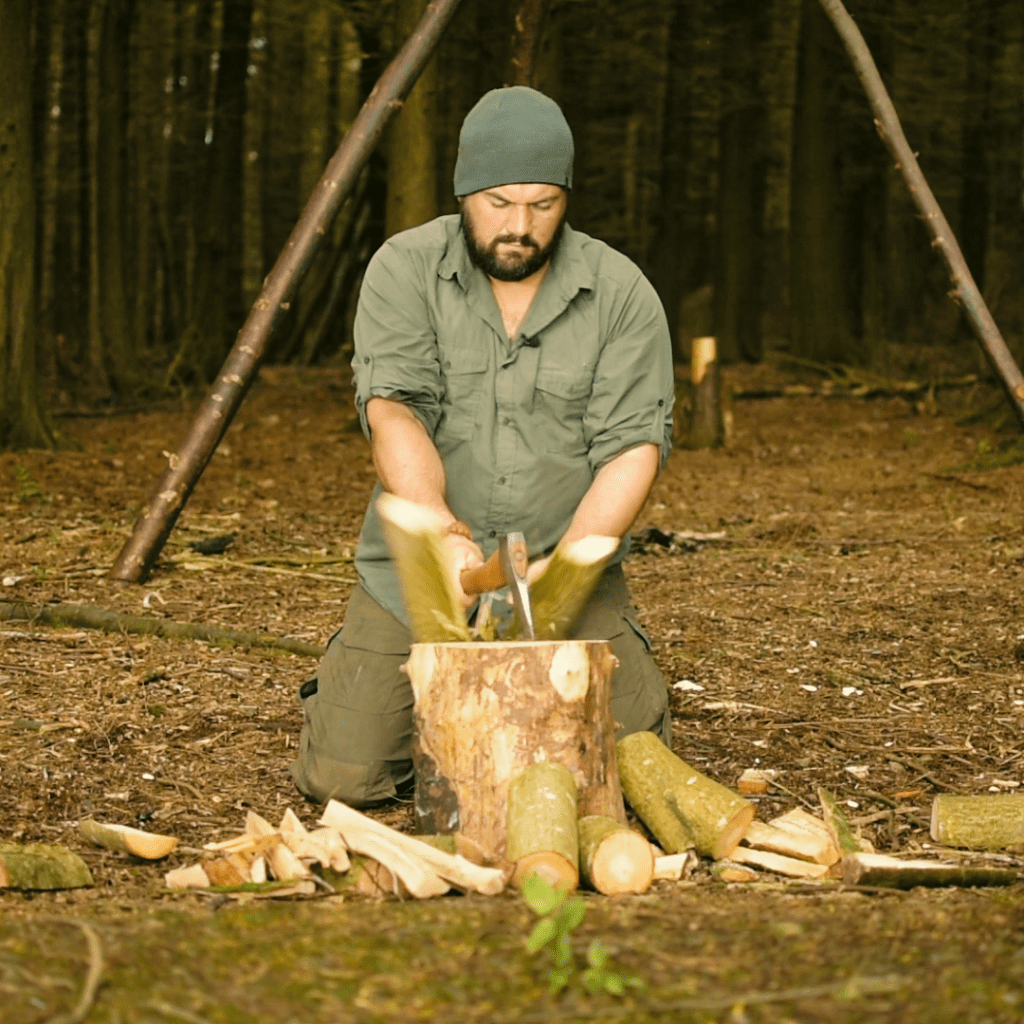
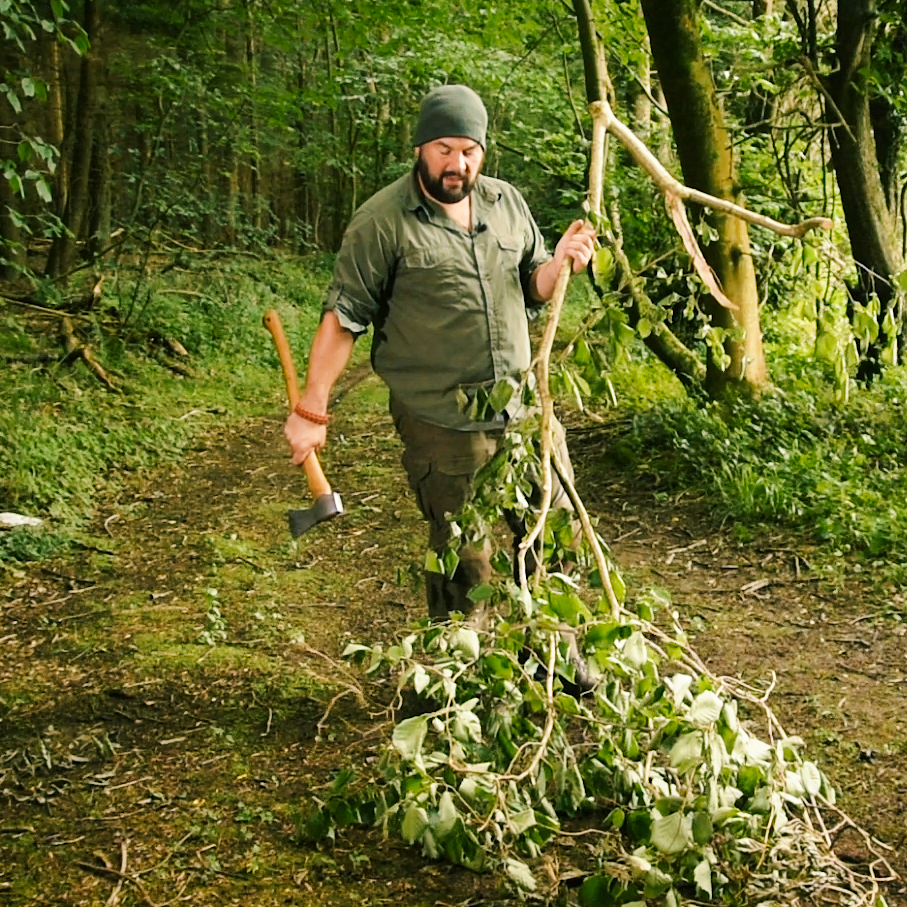
If your swing of the axe, and any mishap or problem that might occur during it, means that your axe blade could hit something else before coming to a complete stop in one of those Three Safe Places then you need to stop and reassess what you’re about to do.
A simple change in body position, in the way you are holding the workpiece or the axe, or just slightly changing the orientation of how the axe and the workpiece are interacting will normally fix most problems.
Don’t rely on leather boots to save you – an axe will happily cut right through them.
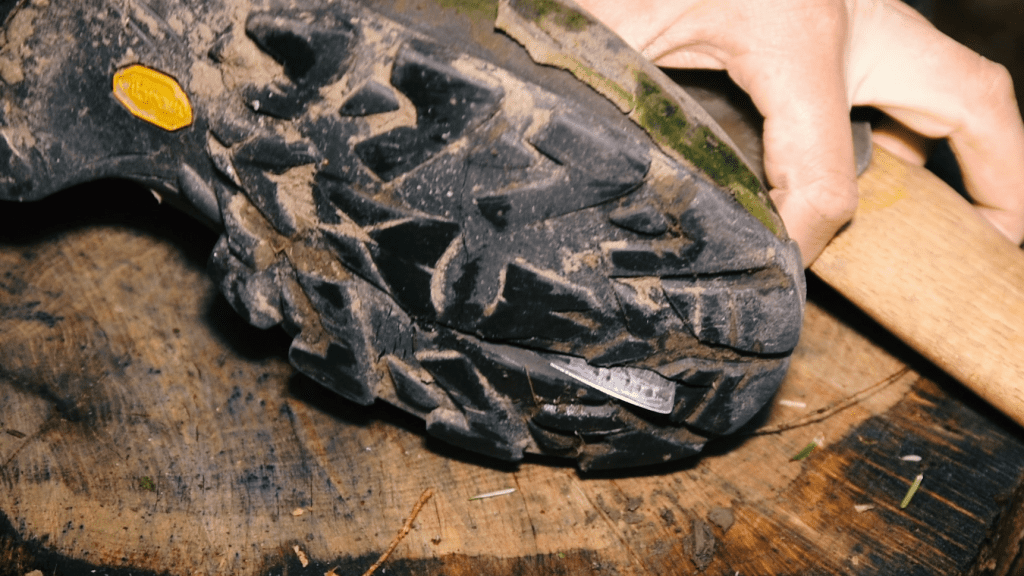
Axes get put away after use
All cutting tools should have a designated place that you keep them when not actively in use, and should have a sheath/mask/cover to both protect the cutting edge of the blade, and to protect you FROM that cutting edge.
Axes get put away after use
You need to create a safe working area around you, with enough room for you to safely work and do what you need to do with that axe. You also need to communicate that to those around you, and they need to respect your working space.
Some Safe Axe-use Techniques
This is the video where we make a mallet from a single piece of wood with green woodworker Doug Don.
It’s not rocket science
That rule should work for all axe users, in all use cases. There are many elaborate ways to use an axe for carving, shaping, splitting, snedding and felling. Different axe styles, different wood types and even different user sizes will dictate exactly which technique is best for that time and place, but all safe uses of an axe should mean that the axe only lands in one of those Three Safe Places:
1. The Workpiece
2. The Cutting Surface (or the ground)
3. The Air
A Mountain Leader with over a decade of experience across the UK and overseas, Richard is our Lead Instructor and a partner in Original Outdoors. He is a specialist in temperate wilderness skills and the wild foods of the British Isles, and also works as a consultant for various brands and organisations. Richard lives in North Wales.
A Life more Wild.
A Life More Wild is the philosophy which underpins everything we do.
It encompasses practical skills, personal development, community learning and a journey to live more intentionally.



